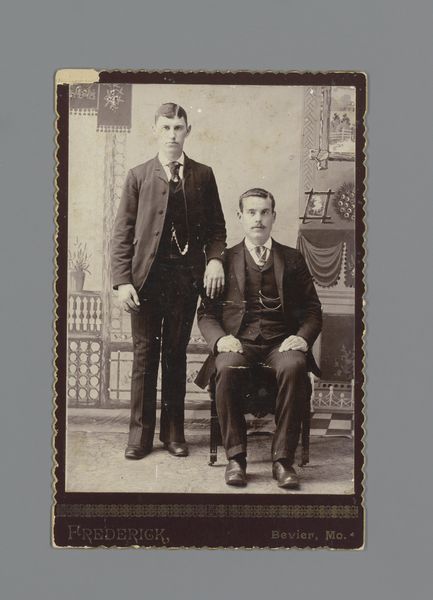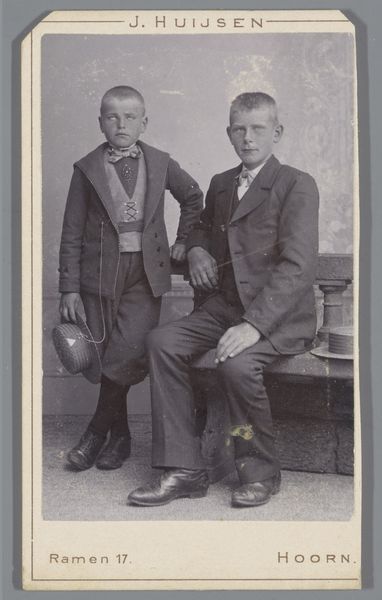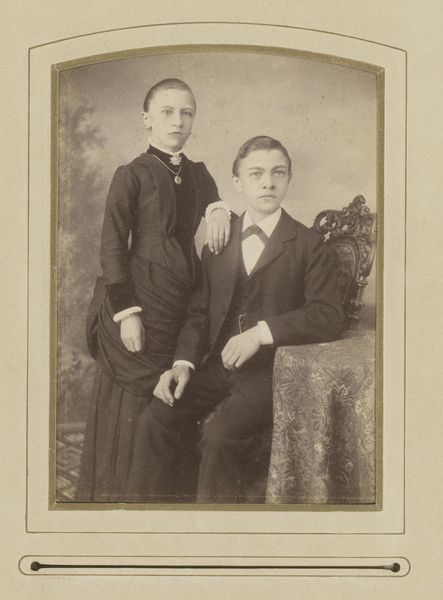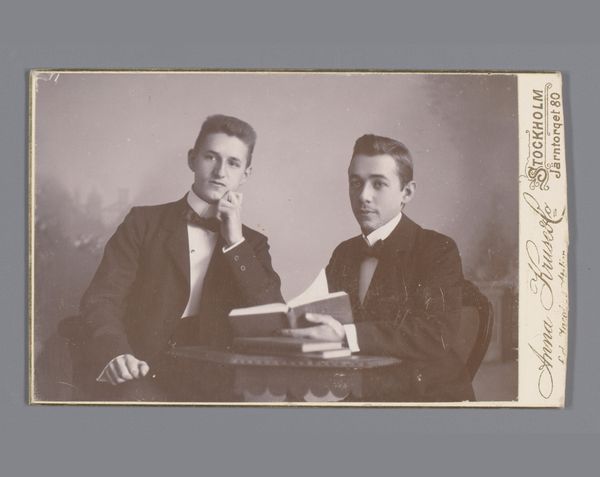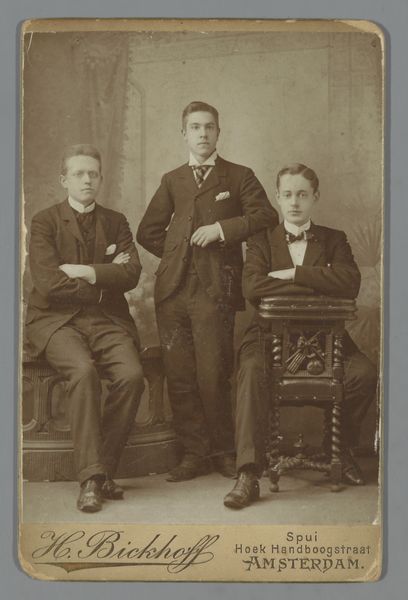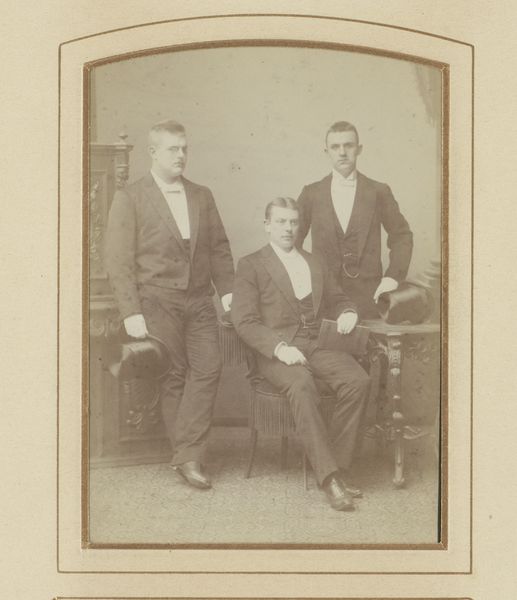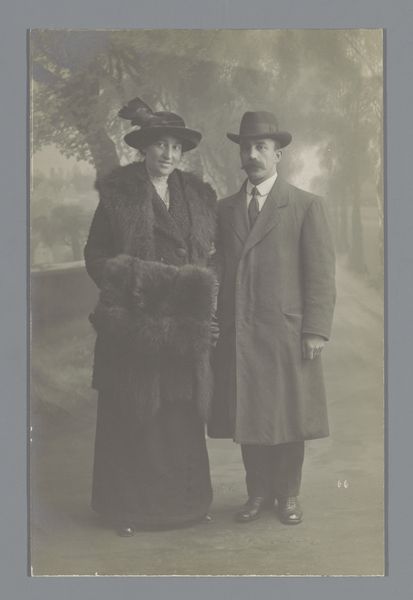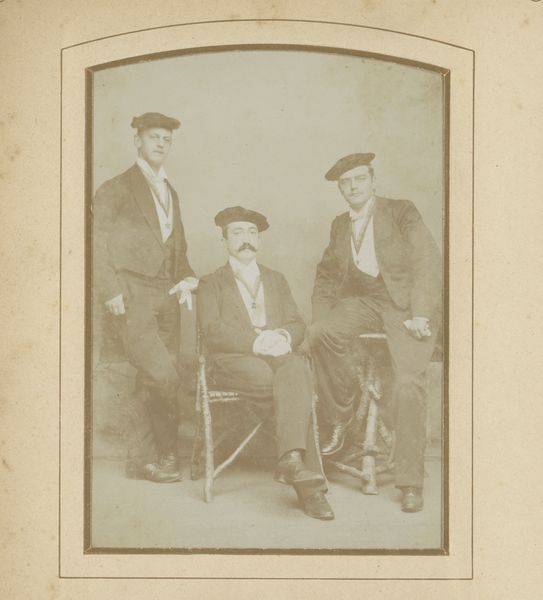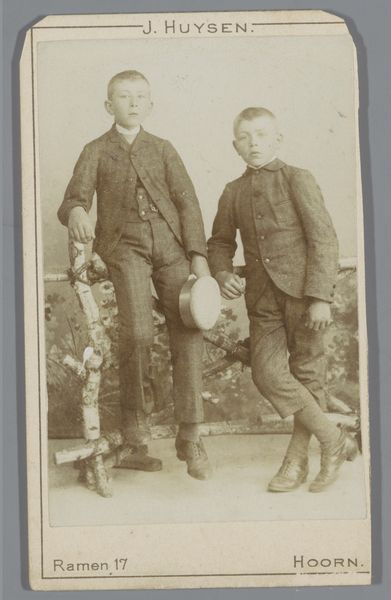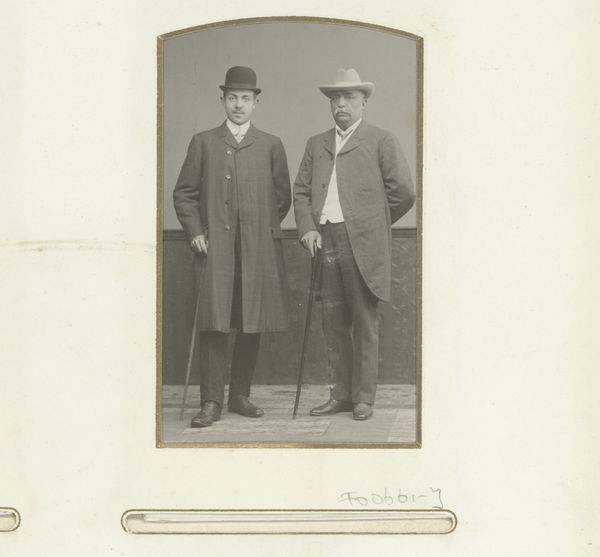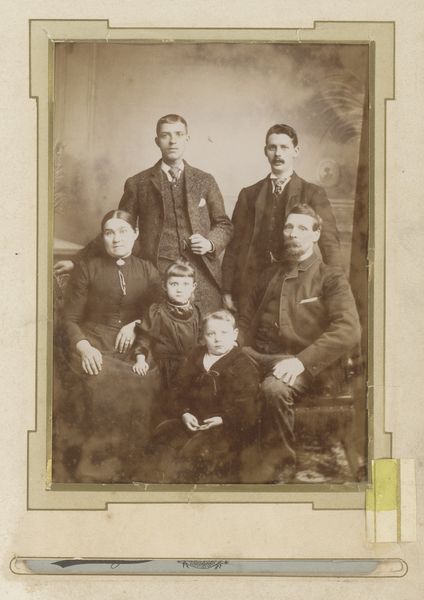
print, photography, gelatin-silver-print
#
portrait
# print
#
photography
#
gelatin-silver-print
#
modernism
#
realism
Dimensions: height 103 mm, width 63 mm
Copyright: Rijks Museum: Open Domain
Curator: Welcome. We’re standing before "Portret van twee onbekende jonge mannen," a gelatin-silver print, created between 1913 and 1914. Editor: Immediately striking – a blend of formality and quiet introspection. The limited grayscale palette contributes to the somber yet elegant atmosphere. Curator: Yes, this print, this object, carries the weight of its process. The gelatin silver printing process, which rose to prominence in the late 19th century, offered a crispness and tonal range previously unseen in photography. These aren’t just images; they're artifacts reflecting specific advancements in photographic materials. Editor: Indeed. Beyond the materiality, I'm drawn to the subtle symbolism embedded in the composition. The seated figure exudes a controlled ease, contrasted by the standing figure who has his hands clasped behind his back, possibly suggesting different roles or temperaments. And, consider their suits; symbols of status and belonging, speaking to a societal structure eager to claim and define identity. Curator: Precisely, and to analyze the garments and the wicker chair further underscores this point. Wicker, at the time, represents a very particular intersection of mass production techniques and traditional craft, indicating something about the economic strata. What kind of resources went into these very conventional but revealing class signals? How do photography studios contribute to image-making processes? Editor: The background is also interesting: it looks intentionally obscured. This abstraction lends an aura of timelessness to the portrait. Curator: Abstraction is always appealing to our modern tastes, but at the time that backdrop had to be manufactured and provided, representing studio costs, trends in display, choices of photographic entrepreneurs. Editor: And even now it’s intriguing how this image becomes a blank slate onto which we can project our own interpretations of brotherhood, of aspiration, and of the unspoken stories contained within the frame. The gazes are haunting and melancholic. Curator: Considering the advancements in photographic materials during this time it can also make us reflect on photography and its democratization. These advances transformed image capture from an activity almost exclusively available to the upper classes to something approaching widespread availability. Editor: Exactly, and thinking of our subjective response, seeing such potent yet serene representations opens up an unexpectedly introspective viewing space. Curator: It's a powerful photograph; a small, manufactured item that speaks volumes about cultural change, photographic advancements, and continued social dynamics.
Comments
No comments
Be the first to comment and join the conversation on the ultimate creative platform.
